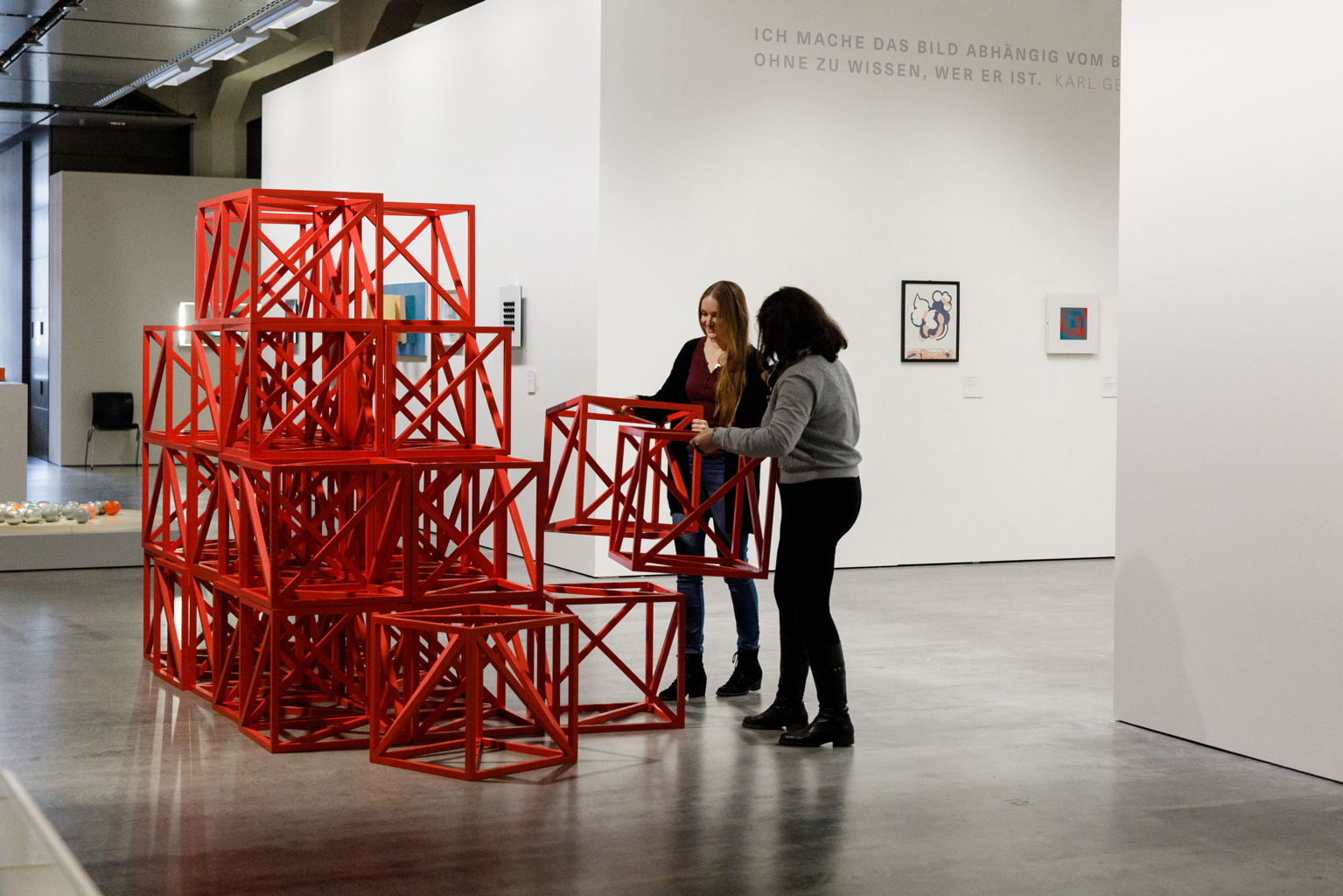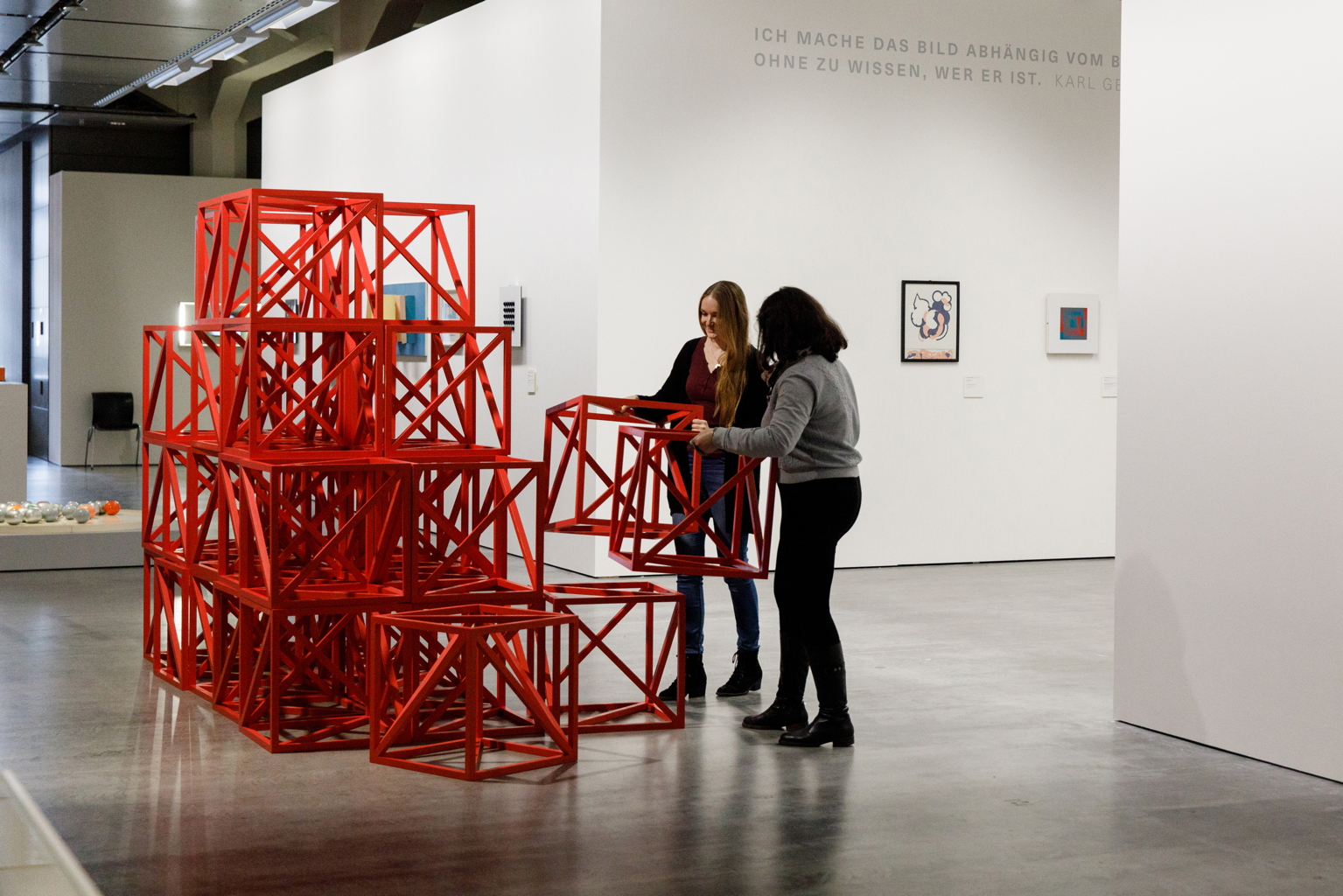Rasheed Araeen
Zero to Infinity
2009
- Artist / Artist group
- Rasheed Araeen
- Title
- Zero to Infinity
- Year
- 2009
- Category
- Sculpture
- Installation
- Material / Technique
- 36 cubes ; wood, paint
- Dimensions / Duration
- 50 x 50 x 50 cm each, installation dimensions variable
- Collection
- ZKM | Center for Art and Media Karlsruhe
- Description
- In the 1960s, viewers became active contributors, as artists began to involve them in the creation of the work of art. Rasheed Araeen was one of the pioneers of this participatory art. The installation works he has been creating since the 1960s, which he refers to as 'structures' in contrast to traditional concepts of sculpture, counter hierarchical understandings of the artist vis-à-vis the viewer.[1] The modular and combinatorial structures of the open grid cubes are seen by Araeen as an opportunity for the introduction of a democratic concept of art in which everyone can participate. The work »Zero to Infinity« invites visitors to take the red lattice cubes made of thin wooden struts, using them to create new structures. In his work the artist seeks to question, »the idea of art as a fixed object of contemplation, conceived and realised by the genius of artist alone.«[2] The participatory principles of his notion of art enable the viewer to enter into a dynamic relationship with the work. The title of the sculpture »Zero to Infinity« reflects the potential for continuous change and unlimited variation that is immanent to the work. Although the work may not be political at first glance, the artist nevertheless emphasizes with regard to the viewers’ empowerment and the deconstruction of hierarchical structures between artists and viewers: "The art which is often described as art for ‘art’s sake’ may appear to be innocent of a political affiliation, but when its form or structure is analysed it reveals an ideological underpinning representing a particular and specific position or worldview. In this respect, »Zero to Infinity« is political."[3] Araeen was early in advocating the opening of art’s canon to global perspectives. In 1987, he founded the influential journal Third Text, with the aim of providing marginalized artistic practices and art criticism with a platform and critiquing the Western focus in art. [1] Rasheed Araeen, in: »Viva Arte Viva. 57. Esposizione Internazionale d´Arte. La Biennale di Venezia«, exhib. cat. (Venice: La Biennale di Venezia, 2017), p. 186. [2] Rasheed Araeen, »Art Beyond Art: Ecoaesthetics; A Manifesto for the 21st Century« (London: Third Text Publications, 2010), p. 43. [3] Ibid., p. 48.
Author
Judith
Bihr

